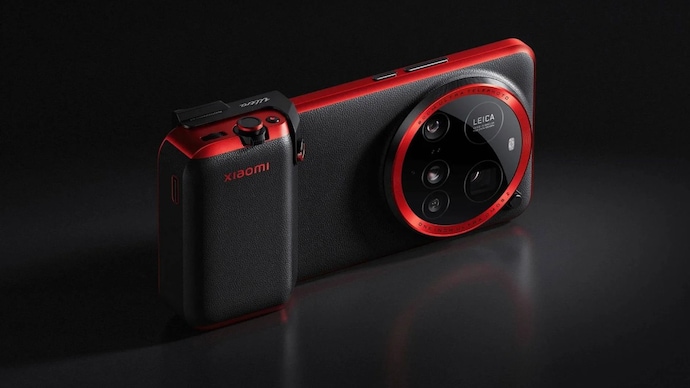1-inch is not really 1-inch? How Vivo, Oppo, and Xiaomi Hard-Saling smartphones are cameras
When Xiaomi, Vivo, or Oppo say that their phone has a “1-inch” or even “1-inch type” camera sensor, they are not almost ever talking about a one-inch sensor.
Listen to the story

When Xiaomi founder and CEO, Lei June introduced the world to Mi 11 Ultra, they did so by comparing Sony RX100. It was a bold step, but it was not baseless. Xiaomi had hardware and numbers to return her claim. It was probably the first mainstream phone to facilitate the “1-inch type” camera sensor, the type one would generally be associated with DSLR cameras. Xiaomi had goods, and it was only clear that it wants – and choose to close them.
But this step also opened the world of smartphone in confusion. This question which was with most people-and can be something, even today-what is the “1-inch type” sensor in the world? The problem occurs only when the product marketing easily removes the word “type” in which we leave with even more confusion. 11 Ultra was launched in 2021. We have several “1-inch type” sensor-totting phones since then. Oppo, Vivo, even Huawei mastered the science of impossible large sensor fittings inside their equipment, without compromising on looks and feel.
What is your type?
When Xiaomi, Vivo, or Oppo say that their phone has a “1-inch” or even “1-inch type” camera sensor, they are not almost ever talking about a one-inch sensor. In fact, in many cases the actual size is not even close to an inch.
The word “1-inch” is in analog TV era, where imaging tubes were measured by their external diamet, not their usable areas. The part that captures the image was very young, even though the tube was in about 1 inch diamet. The cameras have since gone to use digital sensors, but naming-1-inch type-Lives on.
When we hear about a 1-inch sensor today, especially in smartphones, a 1-inch type of sensor is close to 16 mm (or about 0.63 in), so you cannot expect a full 25.4 mm (1 in).
What is inside the latest flagship?
The Samsung GN2 in Mi 11 Ultra from 2021 was 1/1.12-inch sensor that translated into an effective sensor area of 11.4 x 8.6 mm. Each pixel was 1.4 micrometers in size. Today’s Xiaomi 15 Ultra cut, we have Sony’s Lyt-900 sensor. It has 16.384 mm and 1.6 micrometer pixel shaped diagonal. Oppo discovery X8 Ultra uses the same sensor.
Vivo X200 Pro, meanwhile, uses relatively new Sony Lyt-818. On paper, new means better. But this sensor is smaller than LYT-900 with a 1/1.28-inch optical format and a diagonal of 12.49 mm. It also has small pixels at 1.22 micrometers.
Here is described why these numbers matter: The size and pixel dimensions of the sensor directly affect how much light can capture the camera, which in turn affects the expansion, dynamic range and performance in low light. The law of the thumb is that a large sensor should be equal to better photos. But this is only when it is fully used.
In DSLR cameras, 1 inch sensor is used in perfection. It is often paired with high-end lenses. Image processing is more customized. In the smartphone, this is a different story.
Even if a smartphone has a 1-inch type sensor, it usually does not use a full surface area. This is due to many limitations: lens size, module thickness, thermal, image processing power, some names. Since the lens does not adequately project a large image to hit the full sensor, its share is out. Therefore, while marketing can say a 1-inch sensor or even 1-inch type, the actual world performance is not the same as a professional camera with a 1-inch sensor.
Brands like Oppo, Xiaomi, and Vivo are playing all numbers games. This is for clear reasons. Phrases such as “1-inch sensor,” “Litia Optix,” and “large pixel shape” look great and make a perception of DSLR-like power in your pocket device. But the average consumer does not know this. They see 1-inch words and believe that it is impartially better than small sensors. This is where confusion begins.
So, what size does it matter?
In the case of smartphone camera sensor, absolutely yes. But reference matters more. A large sensor- on paper- that is not fully used, or combined with a young age, you will not give results like DSLR that you can expect. Customized software and image processing often matters more to the real -world image quality in smartphones.
The smartphone is about photography agreement and adaptation. To what extent, it sets a great camera phone in addition to a good camera phone. While Lyt-900 and Lyt-818 are powerful sensors, they are limited by the form factor of the phone. The “1-inch” sensor in your phone can be a strong artist, but it is not really an inch. And it is not being used for its full capacity. The real -world results still depend on how good hardware and software are together. Fortunately, brands have started focusing on this aspect, which is why we have some great camera phones in the market today.





